How To Say Inches In Chinese? 5 Best Ways To Say Inches in Simplified Chinese
Have you ever wondered how to say inches in Chinese when measuring something in inches? Whether you are working on a cooking recipe or communicating with others about measurement systems worldwide, knowing how to say “inches” in Chinese is crucial.
In this article, we’ll reveal 5 ways to translate inches in Chinese and share practical examples and tips on how to use them to help you bridge the gap between learning and practical application. Whether you want to learn the Chinese language or are working on a professional project, you will learn how to incorporate this term into your conversations confidently.
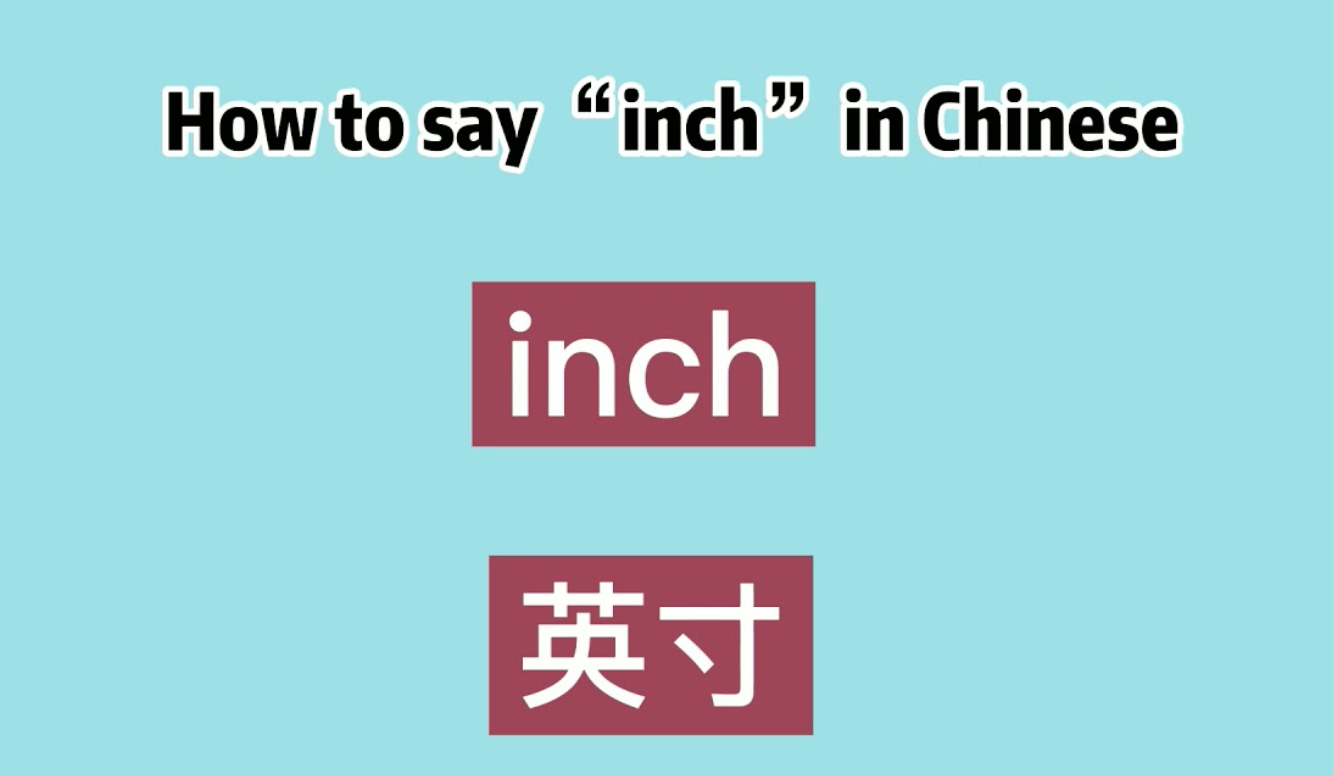
5 Best Ways to Say Inches in Chinese
The basic measurement term “inch” is crucial various situations, both daily and professional, from buying clothes to discussing building dimensions. Knowing how to say inches in Chinese can greatly improve your ability to communicate in situations where you need to speak Chinese.
Learn authentic Chinese from those who live and breathe the culture.
Specially tailored for kids aged 3-18 around the world!
Get started free!1. 英寸 (yīng cùn) noun | inches
“英寸” (yīng cùn) is one of the standard Chinese translations of “inch”, and is a measure word widely used in daily life and professional fields.
For example, when shopping, clothing sizes are often expressed in “英寸 (yīng cùn)”, such as shoulder width and waist circumference. In architecture and engineering, the dimensions on drawings are also often expressed in “英寸 (yīng cùn)”. The term “inch” is widely accepted in many industries in China, especially when it comes to international standards.

Mastering this basic translation of inches can help you communicate more effectively, especially in situations involving measurements and dimensions.
Examples
- Twelve inches are equal to one foot.12英寸等于1英尺。(12 yīng cùn děngyú 1 yīng chǐ)
- He had a cut an inch long above his left eye.他左眼上方有一道1英寸长的伤口。(tā zuǒ yǎn shàngfāng yǒu yī dào 1 yīng cùn cháng de shāngkǒu)
- The snow was six inches deep in some places.有些地方积雪有6英寸深。(yǒu xiē dìfāng jī xuě yǒu 6 yīng cùn shēn)
2. 寸 (cùn) noun | inch; size; dimension
Although you can say inches as “英寸” (yīng cùn) and “寸” (cùn) in Chinese, “英寸” and “寸” are two different units of measurement in China.
- 寸 (cùn) is larger than 英寸 (yīng cùn).
- 1寸 is equal to 3.33 centimeters, and 1英寸 is 2.54 centimeters, so 寸 is bigger than 英寸. “寸” (cùn) is a traditional Chinese unit of length, and “尺 (chǐ)”, “丈 (zhàng)” for the decimal system, 10寸 (cùn) is 1尺 (chǐ), 10尺 (chǐ) is 1丈 (zhàng).
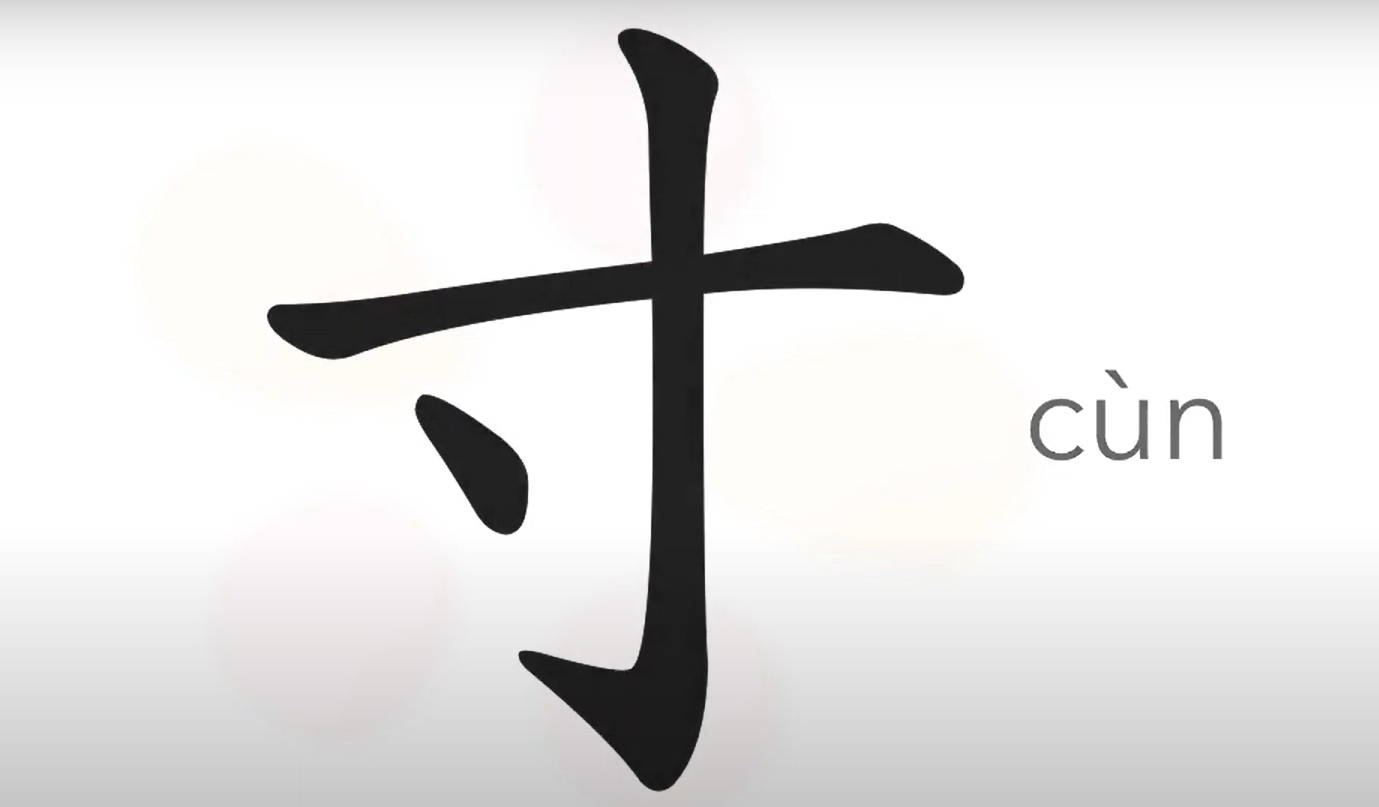
Examples:
- The usual tolerance for steel plates of this thickness is 1/8 inch.这种厚度的钢板通常公差是八分之一寸。(zhè zhǒng hòu dù de gāng bǎn tōng cháng gōng chāi shì bā fēn zhī yī cùn)
- One inch color red background three photos.一寸彩色红底照片三张。(yī cùn cǎi sè hóng dǐ zhào piān sān zhāng)
3. 缓慢地移动 (huǎn màn de yí dòng) verb | to move very slowly; inch
The second way to say inch in Chinese is “move slowly”. To inch somewhere means to move there very slowly and carefully, or to make something do this.
It is a verb phrase describing an action, emphasizing movement at an extremely slow speed. In Chinese, the adverb “slowly 缓慢地 (huǎn màn de)” is used to modify the verb “move 移动 (yí dòng)”, reflecting the precision and delicacy of the Chinese language.

Compared with English, the translation of inches in Chinese focuses more on the state and process of the action, not just the result. This type of translation can be used flexibly in many contexts to help Chinese learners better understand and speak Chinese.
In addition, knowing this way of how to say inches in Chinese can not only enrich your Chinese expressions but also convey intentions more accurately in daily communication, especially when describing dynamic scenes.
Examples:
- We are inching towards an agreement.我们在慢慢努力达成共识。(wǒ men zài màn màn nǔ lì dá chéng gòng shì)
- Share prices inched up during the day.今日股价缓慢攀升。(jīn rì gǔ jià huǎn màn pān shēng)
- Residents watched the flames inch closer and closer.居民们眼看着火势慢慢地逼近。(jū mín men yǎn kàn zhe huǒ shì màn màn de bī jìn)
4. 一点儿 (yī diǎn er) noun | inch; a little bit; at all; slightest
Next, there is another way of saying inches in Chinese, which is to translate “inch” as “一点儿 (yī diǎn er)” in the Chinese and use it as a noun. In Chinese language, “inch” can be expressed as “一点儿” (yī diǎn er), meaning “a little bit” or “slightest“. It is often used to describe a trace or subtle degree. For example, “add an inch of sugar” can be expressed as “加一点儿糖 (jiā yī diǎn er táng)” in conversational Chinese.
Moreover, unlike the literal measure word “inch”, the Chinese measure word “一点儿 (yī diǎn er)” emphasizes the “approximation”, reflecting Chinese people’s preference for language context and nuance in daily conversation rather than a precision preference.
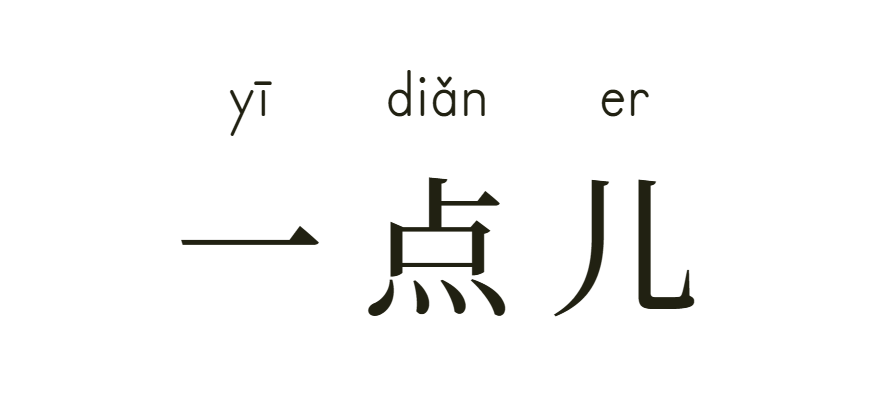
This shows a key linguistic system difference between English and Chinese: English usually values precision, while Chinese tends to favor flexibility.
Examples:
- You haven’t grown an inch.你可是一点儿也没长高。(nǐ kě shì yì diǎn er yě méi zhǎng gāo)
- I wouldn’t trust Charles an inch.我一点儿都不相信查尔斯。(wǒ yì diǎn er dōu bù xiāng xìn chá ěr sī)
5. 角落 (jiǎo luò) noun | inch; corner; nook; angle
The expression is that in certain poetic or metaphorical contexts, “角落 (jiǎo luò)” can convey the idea of a narrow, restricted space, similar to the way that “inch” is sometimes used to describe something extremely small or narrowly restricted (as in “not giving an inch”).
Also, in Chinese “角落 (jiǎo luò)” literally means “inch”, “corner” or “nook” and is usually used to describe small and hidden places, emphasizing the space rather than the unit of measurement.
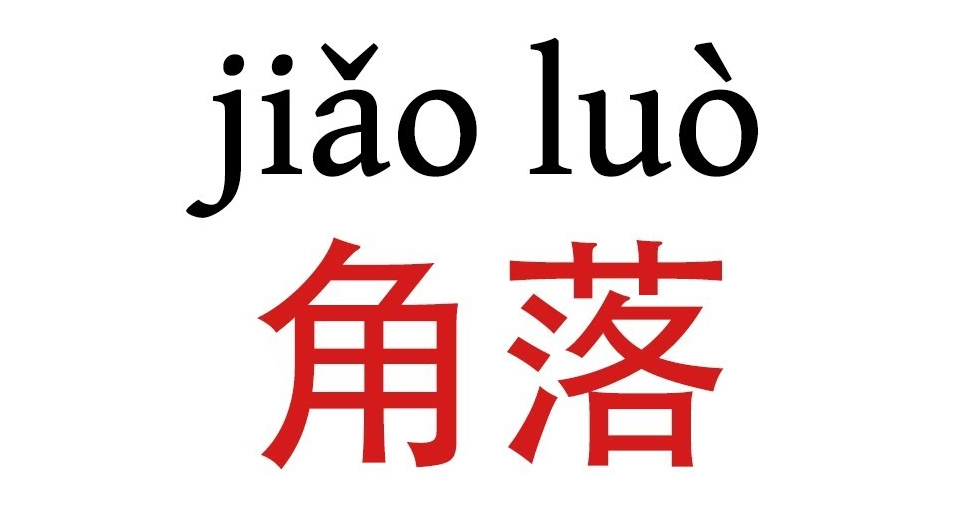
Examples:
- She found a small inch where she could place her plants.她找到一个角落,可以放她的植物。(tā zhǎo dào yí gè jiǎo luò , kě yǐ fàng tā de zhí wù)
- There was a beautiful painting hanging in the inch of the gallery.画廊的一角挂着一幅美丽的画。(huà láng de yī jiǎo guà zhe yī fú měi lì de huà)
- The cat hid in the inch of the room, away from the noise.猫咪躲在房间的角落里远离了噪音。(māo mī duǒ zài fáng jiān de jiǎo luò lǐ yuǎn lí le zào yīn)
Inches in Chinese: Language and Cultural Differences in Units of Measurements
When learning how to say inches in Chinese, it is important to understand the wide range of cultural and practical differences between Chinese-speaking regions and English-speaking regions in the use and recognition of units of measurement.
Although “inch” is directly translated as “英寸” (yīng cùn) in Chinese, the concept of using imperial units like inches is not common in everyday life in China. However, China and most other Chinese-speaking regions primarily use the metric system, which includes Chinese measurement units such as 厘米 (cm, lí mǐ) and 米 (m, mǐ).

The role of inches in Chinese language contexts
In Chinese, inch often appears in very specific contexts, for example:
- Technology and electronics: the screen size of televisions, monitors, and smartphones is often described in inches. A television may be advertised as “55 inches” (55英寸). This is one of the few areas where imperial units are widely recognized and accepted.
- International Standards: In industries that involve global cooperation, such as manufacturing or construction, imperial units (such as inches) may appear alongside metric units. For example, a company working on an international project may describe the diameter of a pipe as “6 inches” (6 inches) for compatibility with global designs.
Inches and Centimeters
However, inches are rarely used in everyday life in China.
- When measuring height, people use meters(米) and centimeters (厘米). In spoken Chinese, a person will say “我身高一米七五” (wǒ shēn gāo shì yī mǐ qī wǔ), which means “I am 1.75 meters tall,” instead of using inches.
- Similarly, centimeters and meters dominate when measuring furniture, clothing, or distances. A table might be described as “两米长” (2 meters long) rather than in inches or feet.
This difference can lead to confusion for English speakers who are used to using imperial units. For example, if someone from the United States says “The table is 48 inches long,” a Chinese speaker may need to convert it to centimeters (about 122 cm) to fully understand it.
Metaphorical uses of Units: Inches in Chinese & English
The metaphorical use of inches in English is that it is often used figuratively to denote smallness or resistance, for example:
- “Every inch counts” (emphasizing the importance of even small efforts).
- “Don’t give an inch” (meaning don’t give in or don’t compromise).
In the Chinese language, there is no direct equivalent of inch. Instead, Chinese has its idiomatic expressions, such as:
- “寸步难行” (cùn bù nán xíng): means “difficult to walk by inches”, referring to the great difficulty encountered in moving forward.
- “寸土必争” (cùn tǔ bì zhēng): expresses a strong determination to protect resources or rights.
These phrases highlight how Chinese culture and language metaphorically use “寸” (cùn, inch), focusing on the traditional Chinese unit of measure rather than the imperial “inch.”
Cultural influences on inches in Chinese
The prevalence of the metric system in the Chinese-speaking world reflects broader cultural and historical influences.
On the one hand, China officially adopted the metric system at the beginning of the 20th century, bringing it in line with global trends. This shift not only facilitated international trade but also simplified domestic standards. On the other hand, countries like the United States, which still rely heavily on imperial units, have retained inches, feet, and miles as part of their cultural identity.
Moreover, this cultural difference extends to how numbers weights, and measures are viewed. In China, where precision and utility often come first, metric units provide simplicity and uniformity.
Quick Reference Table: Inches in Chinese
Here is a table about how to say inch in Chinese to help you quickly grasp common inches in Chinese expressions.
| Inches in Chinese | Pinyin | English |
| 英寸 | yīng cùn | inch |
| 寸 | cùn | inch; size; dimension |
| 缓慢地移动 | huǎn màn de yí dòng | to move very slowly; inch |
| 一点儿 | yì diǎn er | inch; a little bit; at all; slightest |
| 角落 | jiǎo luò | inch; corner; nook; angle |
Tips for Learning How To Say Inches in Chinese
Learning how to say inch in Chinese is both practical and useful. To master inch in Chinese translation, it is important to adopt effective strategies based on linguistic and cultural understanding. Here are some useful tips to help you improve the process of learning how to say inch in Chinese as well as other Chinese learning processes.
1. Daily practice
- Try to describe things that need to be described in inches in Chinese, such as household items. For example, “This table is 40 inches long.” → “这张桌子长40英寸。” (zhè zhāng zhuō zi cháng sì shí yīng cùn).After practicing in this way a few times, you will be able to comfortably switch between metric and imperial systems in Chinese.
- Include units of measure in your conversations. When you talk to your Chinese learning partner or tutor, try to bring up topics that involve measurements, such as discussing the size of a television set or the size of a room. For example, you might ask.“How many inches is your computer screen? → “你的电脑屏幕有多少寸?” (nǐ de diàn nǎo píng mù yǒu duō shǎo cùn?).
All these will help you practice the pronunciation of measurement terms and their usage in actual communication.
2. Chiese learning apps and tools
- Online Chinese learning tools: Tools such as Google Translate, Duolingo and other websites can help you practice speaking and understanding measurement terms.
- Interactive apps: Apps like HelloTalk or Tandem allow you to communicate with native Chinese speakers. Ask them how they describe inch measurements in everyday life, or share your questions for correction and feedback.
- Chinese-English bilingual dictionary: The dictionary can effectively help you when you see Chinese characters that you don’t recognize. It will also give some examples and pinyin notes, etc.
3. Recommended Chinese learning resources
- Chinese online courses, such as ChinesePod, WuKong Chinese, or MandarinHQ, offer practical vocabulary lessons that include measurement terms. These sites often include insights into Chinese culture, which can be especially helpful in understanding when and how to use measurement terms such as inches in Chinese.
- Flashcards for vocabulary retention: Use apps like Anki or Quizlet to create flashcards for measurement terms, pairing the Chinese word with an image of the object (e.g., “6 inches in Chinese” for a smartphone). This visual reinforcement can help solidify your memory.
Frequently Asked Questions
1) How to say inches in Cantonese?
In Cantonese, “inch” is written as “吋” and pronounced as “cyun3” (Cantonese pinyin). This is the same word as “英寸” (yīng cùn) in Mandarin Chinese, but in Cantonese, when people talk about inches in everyday conversation, they usually shorten the word to “吋”.
For example:
6 inches → 六吋 (luk6 cyun3)
55-inch TV → 五十五吋嘅電視 (ng5 sap6 ng5 cyun3 ge3 din6 si6)
As in Mandarin, 英吋 (jing1 cyun3) is the form measure term, but in most cases people just say ‘吋’.
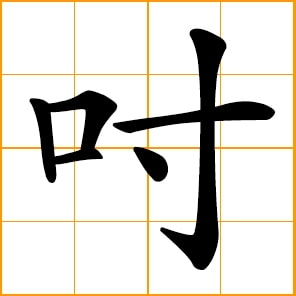
2) How to write inches in Chinese?
The steps for writing inches in Chinese are as follows:
Step 1: Decompose the word
- “英” (yīng) means “English” or “British”.
- “寸” (cùn) means “inch” or “small unit of measurements”
Step 2: Writing Chinese characters
- “英” 6 strokes; first, write the top horizontal, then the vertical, and the right side.
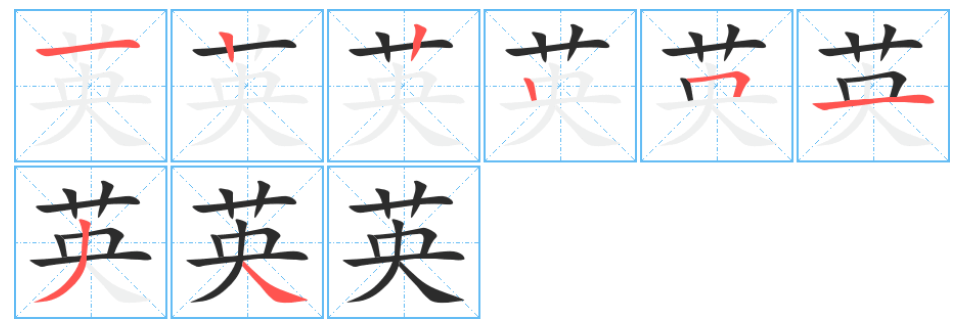
- “寸” 2 strokes; write the top horizontal first, then the bottom vertical.

Step 3: Combine words
When you write “英寸”, write them together without leaving spaces.
3) How do you say feet in Chinese?
Feet means “英尺” (yīng chǐ) in Chinese. Similar to “inch”, “feet” is part of the imperial system and is less commonly used in Chinese measurement units.
However, they may appear in specific contexts, such as when describing height or using certain international specifications.
Examples
- “He is 6 feet tall” → 他身高是六英尺。(tā shēn gāo shì liù yīng chǐ).
- “This room is ten feet wide” → 这个房间宽十英尺。(zhè gè fáng jiān kuān shí yīng chǐ).
Conclusion
Learning how to say inches in Chinese deepens understanding of the cultural differences behind the language and measurement system.
In this article, we not only explore how to say inches in Chinese but also delve into the cultural differences between the imperial and metric systems, emphasizing how understanding these differences can improve communication and mutual understanding. We hope you have picked up some practical Chinese language skills through this text.
If you have any other questions about the topic of how to say inch in Chinese, feel free to share them in the comments below, and we hope you enjoy the process of learning Chinese!
Learn authentic Chinese from those who live and breathe the culture.
Specially tailored for kids aged 3-18 around the world!
Get started free!
Master’s degree from Yangzhou University. Possessing 10 years of experience in K-12 Chinese language teaching and research, with over 10 published papers in teh field of language and literature. Currently responsible for teh research and production of “WuKong Chinese” major courses, particularly focusing on teh course’s interest, expansiveness, and its impact on students’ thinking development. She also dedicated to helping children acquire a stronger foundation in Chinese language learning, including Chinese characters, phonetics (pinyin), vocabulary, idioms, classic stories, and Chinese culture. Our Chinese language courses for academic advancement aim to provide children with a wealth of noledge and a deeper understanding of Chinese language skills.




![20+ Chinese Curse Words Explained: Common Swear Words [with Pinyin & Meanings] 20+ Chinese Curse Words Explained: Common Swear Words [with Pinyin & Meanings]](https://wp-more.wukongedu.net/blog/wp-content/uploads/2025/03/image-353-520x293.png)





![Best Books to Learn Mandarin Chinese for Beginners to Advanced Learners [2025] Best Books to Learn Mandarin Chinese for Beginners to Advanced Learners [2025]](https://wp-more.wukongedu.net/blog/wp-content/uploads/2025/01/9522fcccb9c6cea0772dbed9df4020111ee13be709c05f572e35a0fccd5ad850-520x293.jpg)









![50 Children's Day Quotes; Wishes; Messages [2025] 50 Children's Day Quotes; Wishes; Messages [2025]](https://wp-more.wukongedu.net/blog/wp-content/uploads/2024/04/image-3-520x293.jpeg)





![WeChat in Chinese: A Comprehensive Guide [2025] WeChat in Chinese: A Comprehensive Guide [2025]](https://wp-more.wukongedu.net/blog/wp-content/uploads/2023/12/image-139-520x293.png)
-520x293.jpg)
Comments0
Comments